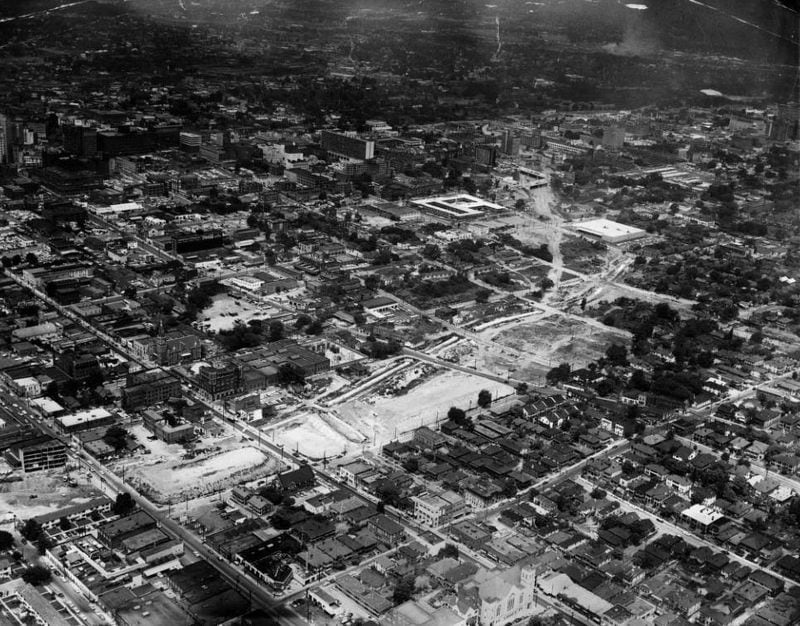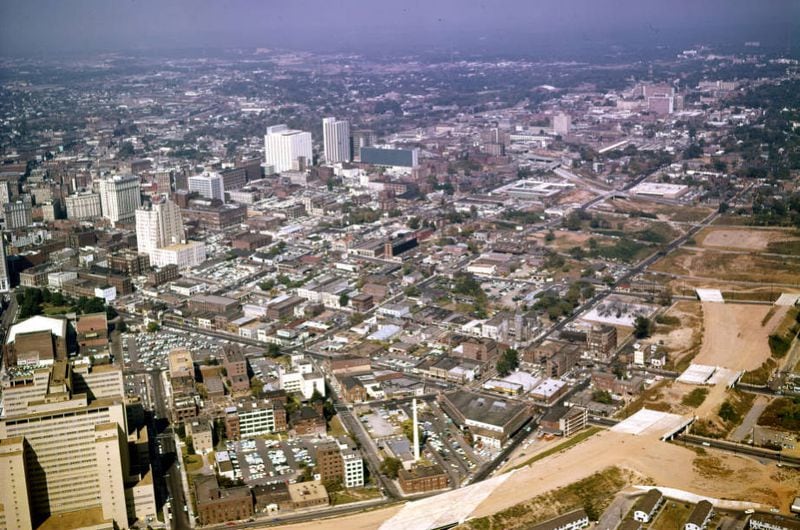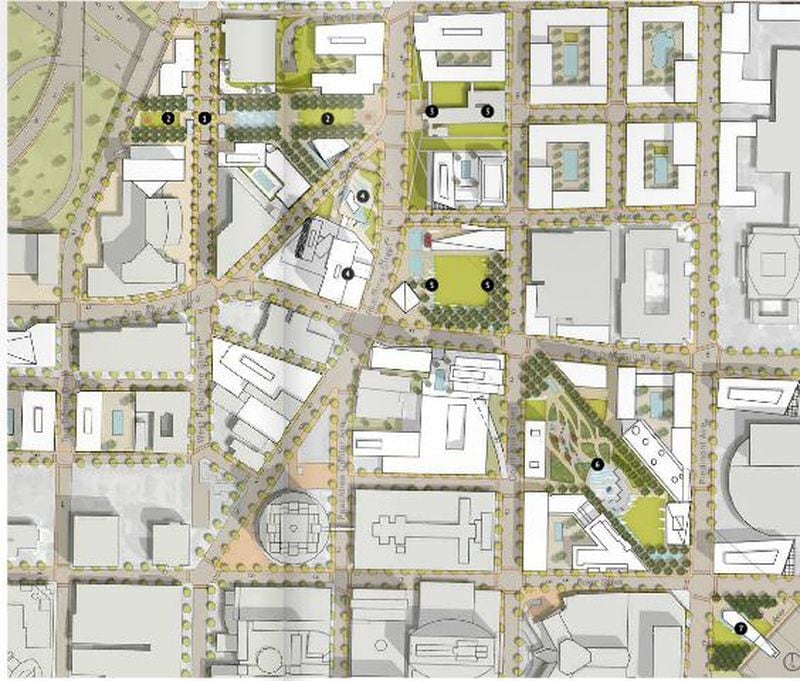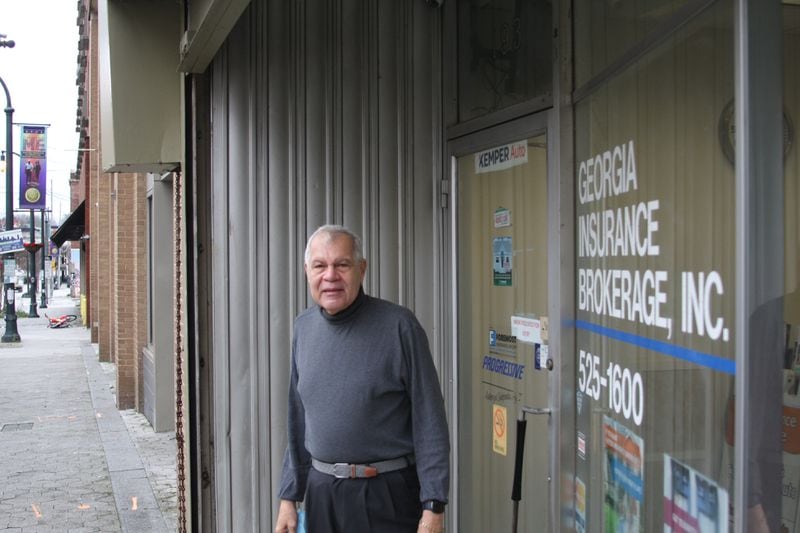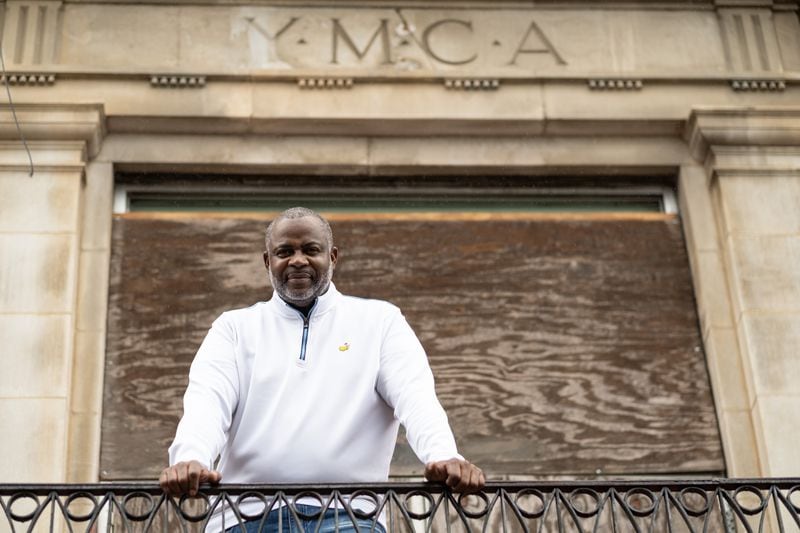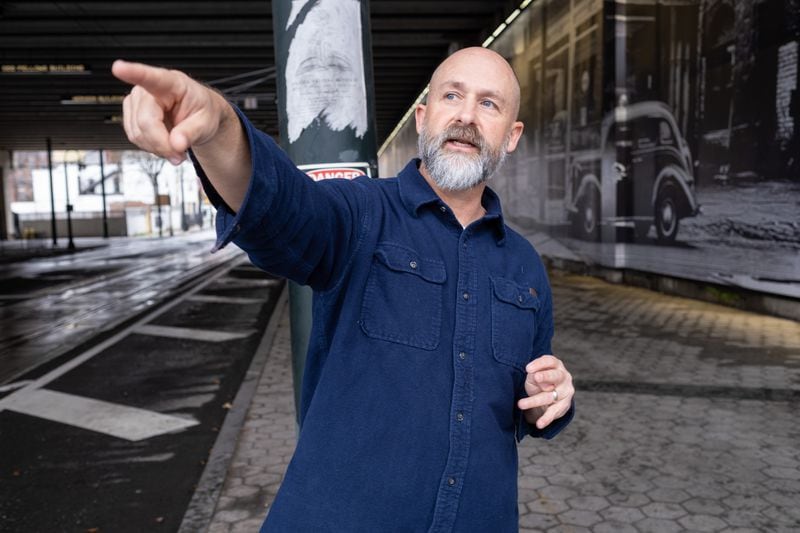Will new federal dollars help Black Atlanta neighborhoods divided by highways?

Four blocks from the church that Martin Luther King Jr. once pastored, a massive overpass bisects what was once a thriving Black community.
Above Atlanta’s iconic Auburn Avenue, cars fly by on the Downtown Connector. On one side of the freeway, there’s a mix of closed-up shops and businesses that have managed to survive in a neighborhood long past its prime; on the other, the building that houses Andy Odle’s nonprofit Remerge and a host of structures slated for renovation.
Every day, Odle is confronted with the highway’s impact. And, every day, he is troubled by it.
“From the noise to pollution to heat, it represents another way that the state has imposed or repressed communities. It is a constant reminder. It doesn’t go away. That is the imagery, but also a way of dividing the neighborhood,” said Odle, the executive director of Remerge, which focuses on community-building and vulnerable populations. ”…You might as well have built a wall.”
Community activists are hoping that places like Auburn Avenue, home to the historic Ebenezer Baptist Church and the neighborhood where King was born, will benefit from the recent passage of a $1.2 trillion infrastructure bill. Tucked in the legislation is $1 billion for communities split by federal highways. Many of the freeways were built in the 1950s and 1960s through or around Black neighborhoods, where land was cheaper and there was a lack of political clout.
Construction of the Downtown Connector started in the 1950s, and it opened to traffic in 1964.
Credit: AJC Archive at GSU Library
Credit: AJC Archive at GSU Library
‘Structural racism in the most literal sense’
America’s interstate highway system expanded greatly after the passage of the Federal-Aid Highway Act in 1956, when Dwight D. Eisenhower was president. Eisenhower said it was “essential to the national interest” to construct more than 40,000 miles of interstate to expand the nation’s roadways, connect America and eliminate unsafe roads. But racism was built into many of the decisions on where to locate those freeways, U.S. Dept. of Transportation Secretary Pete Buttigieg recently acknowledged.
As a result, the highway expansion came at the expense of communities of color throughout the country. Sometimes, the roadways were used as boundaries between minority communities and white neighborhoods.
The construction of I-20 in Atlanta cut off Black residents in the Summerhill neighborhood from downtown businesses. And I-75/85 isolated Summerhill from communities like Mechanicsville on the other side of the highway.
“When you look at the history of these highway developments through historic communities, you are seeing with your own eyes structural racism in the most literal sense of the word,” said U.S. Sen. Raphael Warnock, who is now the pastor of Ebenezer. “Ironically, just as Dr. King was bringing us all together through his vision of ‘beloved community,’ their communities were literally being separated in around the same era.”
Warnock saw the same in Savannah.
The Kayton Homes public housing development, where he grew up, was built in the shadow of I-16′s tentacles of off-ramps near downtown.
Before, the area had restaurants and theaters and was the site of the old Union Station, where people could board trains to just about anywhere.
“There was a jazz scene in Savannah, and that highway sits where many of those businesses in that community were located,” Warnock said.
Credit: Floyd Edwin Jillson
Credit: Floyd Edwin Jillson
The money in the infrastructure bill, which likely will be distributed to states and projects via grants, will be used for proposals that either remove parts of the existing roads or build new ways to connect neighborhoods.
Guidelines for how the money will be awarded and what it can be used for have not been finalized, but the bill envisions projects like parks, pedestrian bridges and reworked roadways. The White House on Tuesday asked governors of each state to appoint their own “infrastructure implementation coordinators” to assist with the bill’s rollout.
While the funding isn’t enough to redress every community that was cut off by the highway system, advocates say it’s a start.
In metro Atlanta, proposals like The Stitch in downtown and the Midtown Connector have been hoisted up by elected officials as ways to help knit together neighborhoods cut off by the construction of Interstate 75/85. Both engineering projects would build decks over the Downtown Connector and cover them with acres of greenspace.
“I like those projects because it’s not simply a matter of moving the highway,” Warnock said. “That alone will not fix the problem that we’re talking about – historic problems. You’ve got to create new structures of prosperity and new economic engines.”
In early December, U.S. Rep. Nikema Williams, an Atlanta Democrat who also serves as chair of the state Democratic Party, met with stakeholders at the Sweet Auburn Community Museum to talk about ways to ensure the infrastructure money makes it to Atlanta.
Those who attended the meeting have been tasked with coming up with a list of priorities to give her.
Auburn Avenue was once called “The Richest Negro Street in America.” Although there are pockets of redevelopment in the Old Fourth Ward, anchored by the Martin Luther King Jr. Historical District, Auburn Avenue is still struggling. Blocks are lined with crumbling and boarded-up buildings.
“When I moved to Atlanta in 1963, Auburn Avenue was jumping,” said longtime Auburn Avenue business owner Wellington Howard.
Credit: Ernie Suggs
Credit: Ernie Suggs
Howard opened his Georgia Insurance Brokerage 52 years ago, purchasing his 1920s era building in 1970 for $12,000, long after the highway split the neighborhood. Still, at the time, his block, between Piedmont and Jesse Hill, was filled with businesses, including barbershops, doctors’ offices and six other insurance companies.
But, over time, the neighborhood became less desirable, in no small part because of the highway, he said.
“One would hope that infrastructure money would filter down to us for Auburn Avenue,” Howard said. “But it is not like they are going to tear the highway down.”
Jerome Edmondson, a board member of the Butler Street Community Development Corporation, formerly the Butler Street YMCA, said the area is also rife with crime and traffic that comes from the highway.
The lack of parking has forced some businesses to close, while homelessness and lack of lighting make even coming down to Auburn Avenue a hassle for tourists and diners, Edmondson said.
The larger Old Fourth Ward community is gentrifying and seeing property values rise, and the nearby Edgewood entertainment district is home to new restaurants and bars. But the streets nearest the highway haven’t seen the same prosperity.
Several weeks ago, Edmondson noticed a man lying in front of the boarded-up YMCA. After about three days, it was discovered that the man was dead. Just before Christmas, his offices at the YMCA were broken into twice. Thieves got away with more than $15,000 worth of donated gifts for the community.
Credit: Ben Gray
Credit: Ben Gray
“It is terrible, and all we can do is be a historic site and tell people what Dr. King and Joseph Lowery did,” Jerome said. “Why is this happening in our community?”
Unrelated to the infrastructure bill, Edmondson said, the Butler Street Community Development Corporation is getting ready to put in 200 housing units in the area, “but we need more parking.”
“This infrastructure money would help us get our street flowing,” he said.
Odle said money could be used to revamp John Wesley Dobbs Plaza, dubbed “Big Head Park” because of the giant mask-like statue of its namesake, once known as “the mayor of Auburn Avenue.“
“It is unusable and right there at the exit, where cars come through,” Odle said about the largely concrete park. “It just creates more vacant land and exacerbates the challenges that we have.”
It should be made into a true park, with grass and trees, he said.
Credit: Ben Gray
Credit: Ben Gray
As for the dark underpass created by the highway, Odle said a priority should be adding more lights. He also thinks that the mural there — a combination of six historic photographs, two of which predominantly feature white people — should be replaced. Make it something that is “Instagrammable,” to attract people and attention to the area, he said.
“There are all types of things that you can do to make it interesting and engaging,” Odle said. “But, right now, it feels like you are going into a cave.”




















































